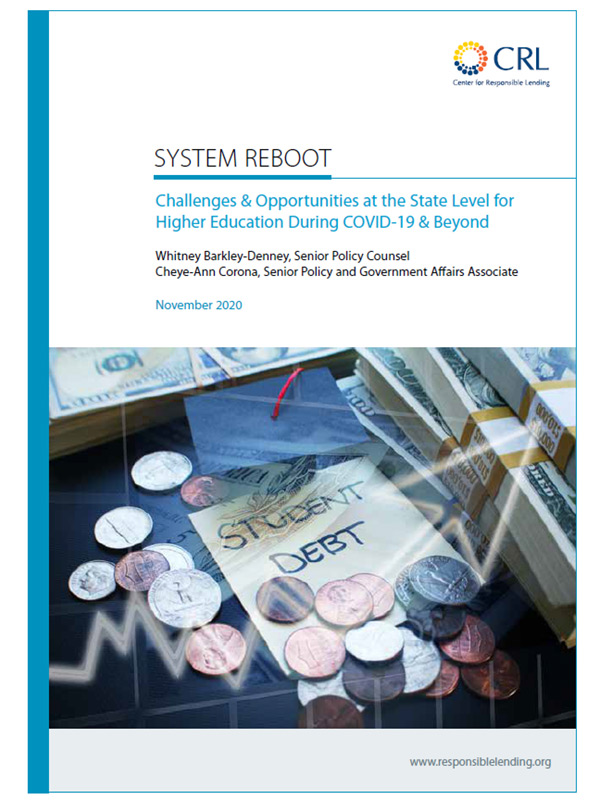The COVID-19 crisis has profound financial impacts on families across the country and on the economy overall. With businesses shuttered (including 40% of Black businesses) and record-breaking unemployment claims filed since March 2020, it is hard to overstate the financial instability and hardship this global pandemic has produced. And it will only get worse. The federal government’s response to the COVID-19 global pandemic has failed to meet the needs of Americans who are forced to choose between staying healthy and working in essential, often low-paying, jobs. Even as the recovery lags, the Senate has failed to pass a second stimulus package that would bring economic relief to millions of impacted Americans. Inaction by our national leaders could sabotage the wealth-building opportunities for a generation. This is especially true for people of color and low-income communities that disproportionately rely on higher education for social and economic mobility. The next generation pursuing higher education will be dually challenged as instruction increasingly takes place online and within a changing economic landscape defined by an unknown recovery timeline.
Although this is the first global pandemic we have seen in over a century, it is not the first economic recession or downturn the United States has encountered in recent history. Many lessons can be learned from the Great Recession of 2008. Although that crisis was different in nature, examining our recent past can give us a road map for policy solutions that avoid repeating failures and unintended consequences. For the purposes of this policy brief, we will be illuminating the intersections between higher education financing, racial inequality, wealth creation, and the student debt crisis. We provide an analysis of factors driving the student loan crisis as well as policy recommendations for reform and warnings for states seeking to protect student loan borrowers in the COVID-19 era and beyond.
